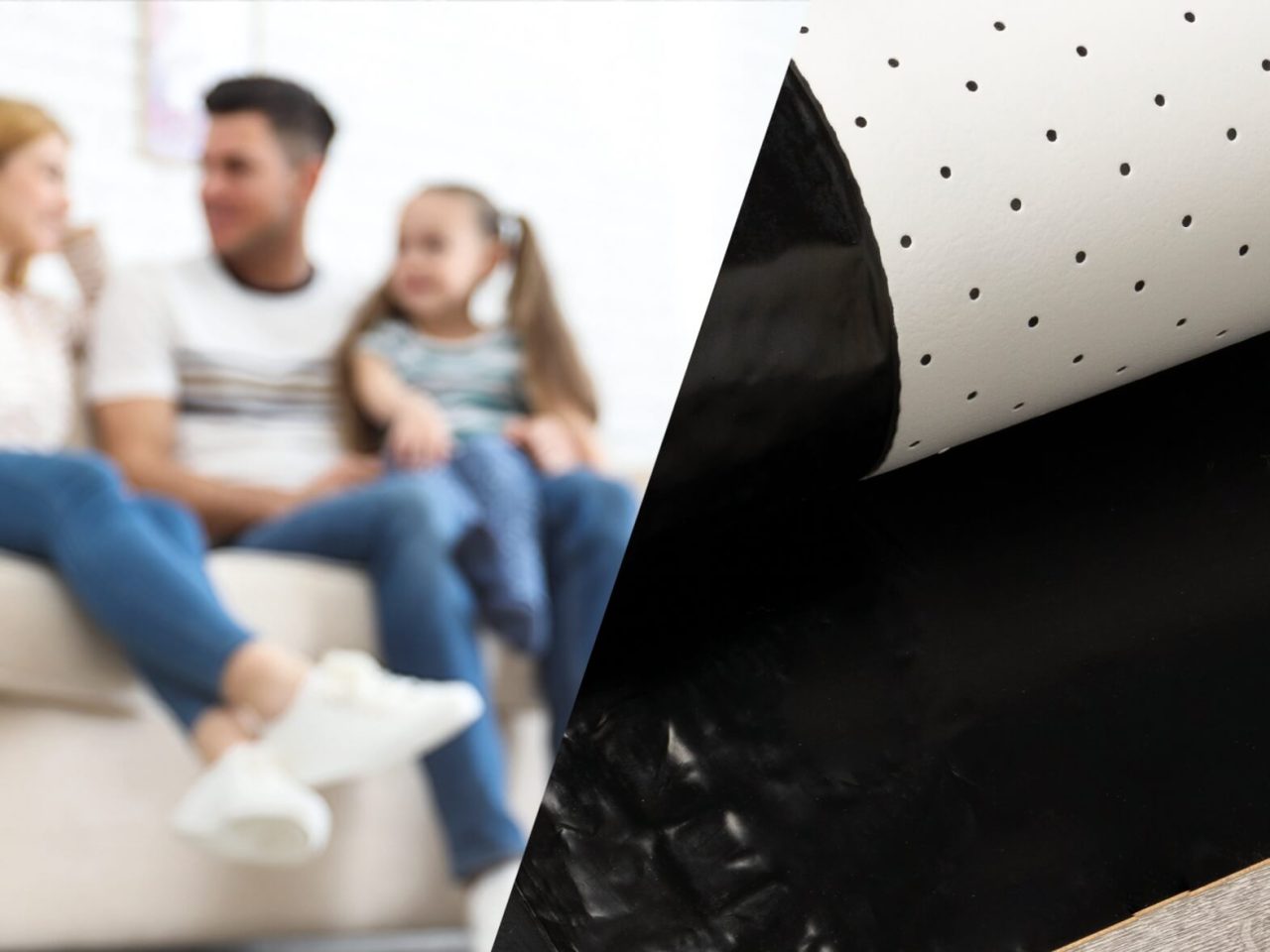Contact sound reduction vs Impact sound reduction
Contact sounds are created by sound vibrations transmitted through structures of a building to other spaces. Examples of contact sounds are footsteps, objects falling to the ground, moving chairs, etc. To reduce the effect of contact sounds, contractors and architects work acoustic concrete underlay and side strips.
Impact sound reduction is created by laying an extra layer under the finishing floor, like floating wooden floor types. If a screed underlay is not possible, the Flooring underlay may help as an extra barrier. But there is more, the flooring underlay reduces also the sound impact of the floor in the room itself, because of its observing functionality.

Application of our products:
At Abriso Jiffy we offer a wide range of solutions to reduce contact and impact sounds.
Check out what the best solution might be for you:
Screed Underlays and Flooring Underlays
First of all, Screed underlays, which are used in the construction of new buildings, apartments, houses.
These Screed Underlay prevent contact sounds to be transmitted though the structure of the building itself.
On the other hand, we offer the Flooring Underlays. These products are laid underneath a floating floor such as e.g. parquet flooring.
Flooring Underlays reduce the surrounding sounds in the room. They provide an effective integrated vapour barrier as well as excellent resistance to high surface loads.

Order samples
Sustainability
As we are committed to sustainability, it is important to extend this to our products. That is why we invest in the production of products that are 100% recyclable.
Last year we recovered 15,000 tonnes of waste and saved more than 25,000 tonnes of CO2.
With Abriso Jiffy’s screed and flooring underlays, you are helping to create a sustainable building in a sustainable world.








